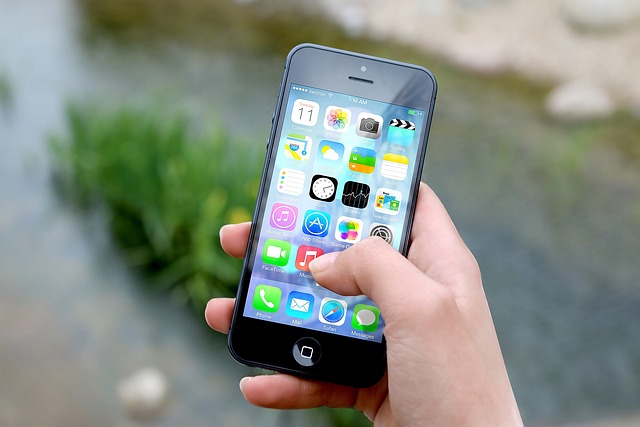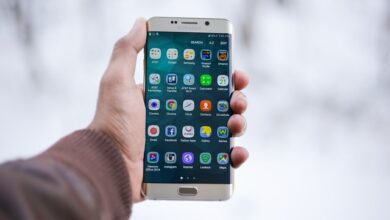
In an increasingly digital world, our mobile devices have become central to both our personal and professional lives. From cherished memories captured in photos to essential documents and important contacts, the data on our phones holds immense value. Losing this data can be devastating, whether due to a hardware malfunction, software glitch, accidental deletion, or even theft. This is where the importance of backing up your mobile data comes in. In this article, we’ll take a deep dive into the various methods and tools available to help you securely back up your mobile data, ensuring peace of mind no matter what happens to your device.
Why Should You Backup Your Mobile Data?
Before we delve into the how, it’s crucial to understand the why. Here are some key reasons to back up your mobile data regularly:
- Protection Against Data Loss: Whether it’s a broken phone screen or a complete malfunction, hardware issues are unpredictable. Regular backups ensure your data is safe, even if your device isn’t.
- Seamless Device Upgrades: When upgrading to a new phone, having a backup allows you to quickly restore your settings, apps, contacts, and more without starting from scratch.
- Accidental Deletion: It’s easy to mistakenly delete an important file or contact. With a backup, you can recover what was lost without hassle.
- Data Security: In case of theft or loss of your device, your data can be wiped remotely, and a backup allows you to restore everything onto a new device.
- Protection Against Malware: Mobile phones are not immune to viruses or malware. A well-maintained backup helps you restore your data if your phone is compromised.
Now that the importance is clear, let’s explore the various ways you can back up your mobile data.
Methods for Backing Up Mobile Data
There are several methods for backing up your mobile data, each offering its own advantages. Here’s an overview of the most effective methods:
1. Cloud Backup
Cloud storage has revolutionized data backup, offering a secure, convenient, and automatic way to safeguard your information. Both Android and iOS platforms offer native cloud solutions, which we’ll explore in detail:
a) Google Drive (for Android Users)
Google Drive is the most popular cloud backup solution for Android users. It offers seamless integration with your Google account and allows you to back up a wide array of data, including:
- Contacts
- Calendar events
- Photos and videos
- SMS and MMS messages
- Device settings (Wi-Fi passwords, wallpapers, etc.)
- App data
How to Enable Google Drive Backup:
- Open Settings on your Android device.
- Scroll down and select Google.
- Tap on Backup.
- Toggle the switch to enable Back up to Google Drive.
Once enabled, your phone will automatically back up your data periodically, and you can manually trigger a backup if needed.
Benefits:
- Accessible from any device with your Google account.
- Data is encrypted during transit and storage.
- 15 GB of free storage with options to purchase more.
b) iCloud (for iPhone Users)
For iPhone users, iCloud is the go-to backup solution. It offers a seamless backup of all your important data, including:
- Photos and videos
- Contacts
- Calendar events
- Messages
- Device settings
- App data
How to Enable iCloud Backup:
- Open Settings on your iPhone.
- Tap your name at the top to access your Apple ID settings.
- Select iCloud.
- Scroll down and tap iCloud Backup.
- Toggle the switch to enable Back Up Now.
iCloud backups occur automatically when your device is connected to Wi-Fi, plugged in, and locked.
Benefits:
- Apple ecosystem integration, making it ideal for iPhone, iPad, and Mac users.
- End-to-end encryption ensures the security of your data.
- 5 GB of free storage, with options to expand.
2. External Backup Solutions
While cloud backups are convenient, they rely on internet connectivity and cloud storage limits. If you prefer local storage or require additional security, external backups are a great alternative.
a) Backup to a Computer
Both Android and iOS devices can be backed up directly to a computer. This method offers more control over your data and allows you to store large files without cloud storage limitations.
For Android:
- Connect your Android phone to your computer via a USB cable.
- Open File Explorer on your computer and locate your device.
- Copy and paste files (photos, videos, documents) into a folder on your computer.
Alternatively, you can use third-party software like Samsung Smart Switch, Syncios, or Wondershare MobileTrans for more comprehensive backups, including apps and settings.
For iPhone:
- Connect your iPhone to your computer via a USB cable.
- Open iTunes (on Windows) or Finder (on macOS).
- Select your device when it appears and click Back Up Now.
Benefits:
- Full control over where your data is stored.
- No need for internet connectivity.
- Ideal for large files or those with limited cloud storage.
b) Backup to an External Hard Drive
You can also back up your mobile data to an external hard drive. This option is excellent for users who want offline storage for large amounts of data or prefer not to store sensitive information in the cloud.
For Android and iPhone:
- Back up your phone data to a computer (as described above).
- Connect an external hard drive to your computer.
- Copy and paste the backed-up files from your computer to the external drive.
Benefits:
- Provides additional security since it’s offline.
- Suitable for users who handle large amounts of data.
- Allows multiple backups on different drives for redundancy.
3. Third-Party Backup Apps
Several third-party apps offer additional features and capabilities beyond native cloud or external backup solutions. These apps are designed to cater to specific backup needs, such as cross-platform functionality or advanced scheduling.
a) Super Backup & Restore (for Android)
Super Backup & Restore is a highly rated app for Android users that allows you to back up everything from contacts to call logs, messages, and even apps.
Features:
- Backup to your phone’s internal storage, SD card, or Google Drive.
- Scheduled automatic backups.
- Backup apps as APK files, making reinstallations easy.
b) Dropbox/OneDrive (for iPhone and Android)
If you’re looking for cross-platform functionality, cloud services like Dropbox and OneDrive allow users to store and access data on multiple devices, regardless of the operating system.
Features:
- File synchronization across devices.
- Excellent for storing and sharing large media files.
- Integrates with both Android and iOS platforms.
Benefits:
- Allows for cross-platform backups.
- Useful for users who prefer to centralize their data across different devices.
4. Using a SIM Card or SD Card
Another way to ensure your data is backed up is by utilizing your SIM card or an SD card, though this method is limited to specific types of data like contacts, photos, and videos.
a) Backing Up Contacts to a SIM Card (Android Only)
You can store your contact list on your SIM card for easy retrieval in case you switch devices.
- Open the Contacts app on your Android device.
- Tap Menu (three dots), then choose Export.
- Select Export to SIM Card.
b) SD Card Backup (Android Only)
Most Android devices allow you to insert an SD card, which can serve as external storage for media files and even app data.
- Insert an SD card into your device.
- Open Settings, then tap Storage.
- Choose Transfer data to SD card.
Benefits:
- Convenient for basic backups like contacts and media files.
- Doesn’t require internet connectivity or cloud storage.
Best Practices for Backing Up Mobile Data
- Regularly Schedule Backups: Set reminders or use automated services to ensure your backups are current.
- Use Multiple Backup Methods: Relying on one backup method can be risky. Combine cloud backups with external storage for added security.
- Encrypt Sensitive Data: Whether using cloud storage or local backups, ensure sensitive files are encrypted for added protection.
- Test Your Backups: Occasionally check that your backups are working correctly and can be restored without issues.



